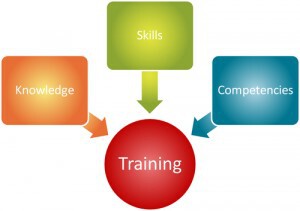How to Build a Better Training Program
Building an effective training program is essential for the success of any organization. A well-designed program can significantly improve employee performance and productivity. To create a better training program, follow these key steps:
1. Identify Training Needs – Before designing a training program, it is crucial to identify the specific needs and goals of the organization. This can be done through surveys, assessments, and discussions with employees and stakeholders.
2. Set Clear Objectives – Clearly define the objectives of the training program. What skills or knowledge do you want your employees to gain? This will help you focus on the essential aspects and eliminate unnecessary content.
3. Tailor Training Methods – Different employees learn differently. Consider using a variety of training methods such as workshops, e-learning modules, on-the-job training, or mentoring programs. This ensures that your program caters to the varied learning styles of your employees.
4. Keep it Engaging – Engaging training materials are more likely to capture and retain employees’ attention. Use interactive activities, case studies, and real-life examples to make the training sessions more interesting and relatable.
5. Provide Ongoing Support – The training program shouldn’t end after completion. Offer ongoing support to employees, such as access to resources, follow-up sessions, and opportunities for practice and reinforcement.
6. Evaluate and Improve – Regularly evaluate the effectiveness of your training program. Collect feedback from participants and use it to make necessary improvements and adjustments.
Creating a better training program requires careful planning and attention to detail. By following these steps, you can develop a program that is efficient, impactful, and beneficial for both the organization and its employees.

As a small business owner, you may not need to grow your company or hire employees. However, you may still need to train a contractor at some point. For example, if you hire a student to help with a marketing campaign, you may need to train them on collaboration, sending projects to your printing company, and distributing materials.
If you do plan to hire employees, training them on multiple processes is essential. Training is necessary for any growing company, regardless of the industry.
Before creating a training plan, evaluate the goals of the program. This will help ensure that the training is effective and efficient. Taking this step back can save time and prevent the need for additional training.
Define Trainee Knowledge Level
First, determine the trainees’ level of knowledge. Are they new employees or experienced professionals? This information will help tailor the training accordingly.
Topic Classification
Next, classify the topic to be covered. Is it legal training, technical information, or new employee orientation? This classification will guide the approach to the training.
Train the Trainers
If multiple people will administer the training, train the trainers on how to lead the program effectively.
Resource Development
Based on the type of training, choose the appropriate methodology:
- Prerequisites – provide a list of reading or resources for trainees to review before the training.
- Lectures – present information in a classroom setting.
- Simulation – recreate real-life scenarios for trainees to experience.
- Discussion – engage trainees in question and answer dialogue.
- Demonstration – show trainees how to perform tasks.
Develop in-class and out-of-class resources accordingly, such as videos, how-to guides, resource links, infographics, PowerPoint slides, and handouts. Measure the program’s effectiveness by testing participants before and after the training.
Automation
Consider using pre-built training programs, allowing trainees to complete certain tasks on their own. This frees up staff and lets trainees engage directly with their training.
Provide clear instructions for trainees to follow independently. Evaluate the effectiveness of the instructions based on trainees’ ability to complete tasks without assistance.
Overview
Training can be time-consuming but necessary for companies. With an effective program in place, measure the results to make it more efficient. Testing the training program can greatly improve its effectiveness.
Hello!
I’m Andrew Brooks, a seasoned finance consultant from the USA and the mind behind phonenumber247.com.
My career is built on a foundation of helping individuals and businesses thrive financially in an ever-changing economic landscape. At phonenumber247.com, my aim is to demystify the complex world of finance, providing clear, actionable advice that can help you navigate your financial journey with confidence. Whether it’s personal finance management, investment strategies, or understanding the nuances of market dynamics, I’m here to share insights and tools that can propel you towards your financial goals.
Welcome to my digital space, where every piece of advice is a step closer to financial clarity and success!
